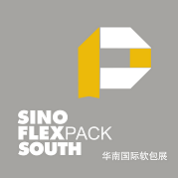Costa Rica’s Numu Brewing uses bold, almost hypnotic symmetrical patterns on its beer packaging.It’s not uncommon for the top design trends each year to appear contradictory. In fact, it’s almost expected! Not everyone likes the same pizza toppings, so to speak. While some designers and brands are experimenting with imperfect shapes and unusual patterns, we’re also seeing packaging that swings in the complete opposite direction by playing with order and balance.
Whether incredibly complex and tight illustrations or looser, more disconnected patterns that leverage negative space, the visually satisfying nature of symmetry elicits a sense of calm, order, and grounding—starkly contrasting the chaos of the last year. A perfect example can be seen on the bold and almost hypnotic symmetrical patterns on the beer cans of Costa Rica’s Numu Brewing.
Now it’s time to get started!
Whether you’re an e-commerce business looking to level up your packaging game this year or a fresh, new brand just starting out, tapping into design trends can be an easy yet effective way to ensure your brand stands out and leaves a lasting impression on customers. But when the design trends all look so incredible, deciding which style is right for your brand can be a bit daunting. In this instance, it can be helpful to ask yourself a series of questions before you start the product packaging design process.
· What is the product? Of course, you need to know how big it is, what shape it is, and what it does to inform the logistical side of things. But by breaking it down even further, you can draw out inspiration for the type of design you’re going to use. What ingredients is it made of? Does it have a particular scent or texture? As we saw with the above trends, often the design—whether it’s a pattern, illustration, or clever use of colors—is so much more than simply an embellishment.
· Who’s buying the product? Your packaging should appeal to your ideal customer, so it’s important that you know who that customer is before designing your packaging. So next you need to ask yourself, who’s your target audience? What do they value and need? Are they old or young? Are they environmentally conscious? Are they on a budget, or do they have a higher disposable income? By homing in on your ideal customer and what’s important to them, you can narrow down your design choices to something that’s truly going to catch their eye.
· Who are you as a brand? Finally, ensure you know who you are as a brand. It’s all very well creating stunning packaging, but if it doesn’t mirror your values, purpose, and personality, it’s not going to create a seamless brand experience. This doesn’t mean you can’t experiment with quirky design, but it should fit within the parameters of your overarching brand narrative. Are you playful or serious? Are you luxurious or cost-effective? Energetic or stoic? And most importantly, what do you stand for?
The answers to the above questions will help you form a blueprint that will guide every facet of your packaging design—from fronts, logos, copy, and colors right through to the materials and different layers you use.
With many consumers realizing that shopping online is beneficial for their daily lives, there’s no doubt that e-commerce looks set to be the norm for many of us. And with the effects this has already had on e-commerce packaging design, it’s likely we can expect to see plenty of beautifully designed packages arriving in our homes for the foreseeable future. PW
Shayne Tilley is Head of Marketing for 99designs, the global creative platform by Vistaprint.
Source Link : https://www.packworld.com/design/package-design/article/21404000/ecommerce-packaging-design-trends#next-slide
